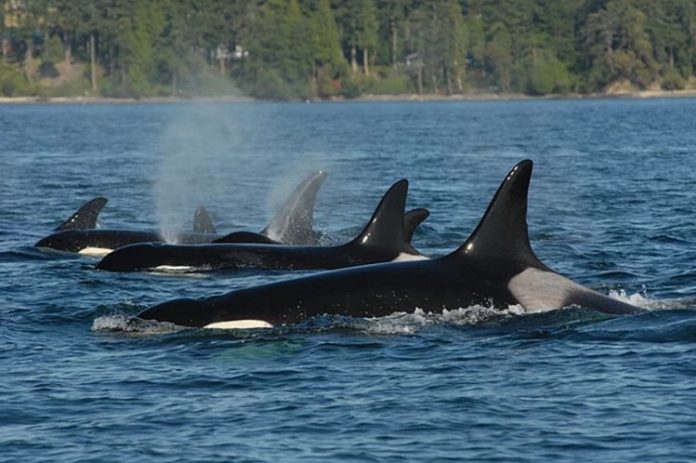
The marine world is a package of mystery. Once lost, it is very difficult to find the thing. And, with the missing of a species, it becomes even more tiresome to search this large water body that covers more than 70% of the Earth. Recently, the oldest known killer whale went missing.

Photo by Ken Balcomb of CWR
The killer whale orca called Granny, is missing from the Salish sea since October, 2016. The 105 year-old matriarch of a tiny pod of orcas in the Puget Sound, is so far the oldest known killer whale. She was spotted back in 1976 by a group of researchers. Her age was estimated based on the study of her family group. The study placed her birthday in 1911 with a 12-year margin of error. Unlike most females that die around the age of 50, she pushed through 100. To emphasize, she has outlived all of her offspring, and enjoyed swimming across the sea with her grandchildren and great-grandchildren.
Granny has been spotted several thousand times in the past few decades, and in recent years, she always turned up leading her pod. Orcas, like most of the mammals, live in a matriarchal culture. The whales stay with their mothers even as they mature and reproduce. The oldest female takes the lead. Most of the females die postpartum. Granny likely hasn’t had a calf for the past few decades as she reached menopause then. Since then, she has been the caretaker of her family.

Photo by Center for Whale Research, 1998
She belonged to the J-pod, which is one of the three family groups that make up the Southern Resident Killer Whale population. Decades after leading the group, all of a sudden, she went missing with six other members of her family, leaving behind 24 others. Recent researches have shown that there were eight new-born just before she had gone missing.
Her population has been fighting through several difficulties. Many of them were caught and sold to aquariums and theme parks. Most of them were exposed to the run-off chemicals, since then making them the world’s most contaminated marine mammals. The difficulties increased with increasing vessel traffic through their waters.
With J2, as Granny is known among the researchers, gone missing, it is tough time for her family to survive amidst these threats.

Photo by Dave Ellifrit, CWR, back in 2009.
Kenneth C. Balcomb, principal investigator said that she kept on going, like the energizer bunny. “I last saw her on October 12, 2016 as she swam north in Haro Starit far ahead of the others. Perhaps other dedicated whale-watchers have seen her since then, but by year’s end she is officially missing from the SRKW population”, he continues with tears in his eyes, “and, with regret we now consider her deceased.”
He worries about Mike Bigg, who could identify every individual by the shape of its dorsal fin and the pigment pattern and scars in the saddle patch on the back of each whale, because he is more attached to the clan. “To whom will he attach now? Who will lead the pod into the future? Is there a future without food? What will the human leaders do?”, questions Ken Balcomb.
The human community must now strive to protect these marine species and prevent them from heading towards extinction. To save this bio-diversity, strict marine rules should be implemented in the near future.



























